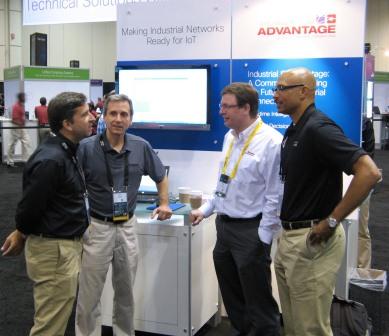The IT (Information Technology) and the OT (Operational Technology) “worlds” are requiring convergence to meet the growing complexity of a more informed customer driven market. Not only in the technical sense, but also organizationally.
I don’t know about you, but trying to keep up with the alphabet soup of acronymous in one world is difficult enough, but when we attempt to combine both “worlds” it can be nauseating to say the least, and produce a terrible “soup” of acronyms I mean both organizations speak different languages, right? OEE, EOL, CNC, MTTR, EtherNet/IP, etc.. for OT, and SNAP, OSPF, EOF, NAT, IP etc.. for IT. The IT world is more formal too, right? For example, IT SIP’s and OT umm ……..CIP’s.
Can you imagine the language and cultural challenges of both worlds trying to understand each others language let alone work jointly to execute programs and projects that drive business value for their company’s and markets? I’ve heard in some organizations that proposition often times causes a bigger confrontation than the epic Ali vs. Frazier “Thrilla in Manila” battle, but it doesn’t have to be that way. In fact, the Industrial IP Advantage website is an educational community of both IT and OT professionals. A IT and OT broker if you will. You will find that the two worlds are not so different.
Paul Brooks, Rockwell Automation; Dan McGrath, Panduit and Kevin Davenport of Cisco discuss how OT and IT professionals can leverage the Industrial IP Advantage community to accelerate the adoption of IP technology to converge both “worlds” and extract tangible value from the IoE opportunity.

The IT and OT worlds have more commonality than differences. In fact, one of the common areas of focus for both worlds revolve around “standardization.” Historically, OT technology projects and deployments have leveraged modified Ethernet implementations to connect machines, sensors and the like on plant floors. This approached has produced many different flavors of industrial modified ethernet protocols, such as, ProfiNet, EtherCAT, Powerlink, etc.. Although these ethernet implementations allowed manufacturers to move further away from costly, difficult to maintain, and hard to scale proprietary technology the industry recognizes that a more universal standard technology approach is required to take advantage of the Internet of Everything (IoE) revolution and the 3.88 trillion dollar of manufacturing value associated with the IoE opportunity. That standard technology foundation is Internet Protocol (IP).
By using the power of standard, unmodified Internet Protocol (IP) manufacturers finally have a universal technology platform that improves connectivity between people, partners and processes, devices, departments and systems in industrial applications, and opens up new opportunities for productivity, efficiency and flexibility. Industrial IP Advantage is an idea and resource to bridge the language and cultures barriers of IT and OT together and drive the business and technical values required to meet the demands of the new consumer.
Please register for the community and join a growing community of your IT and OT peers who are innovating, learning and accelerating the adoption of IP to shorten their design cycles, drive supply chain agility, connect in more meaningful ways with customers and drive increased profit for their company. In addition, you’ll have fun learning a new language.
CONNECT WITH US